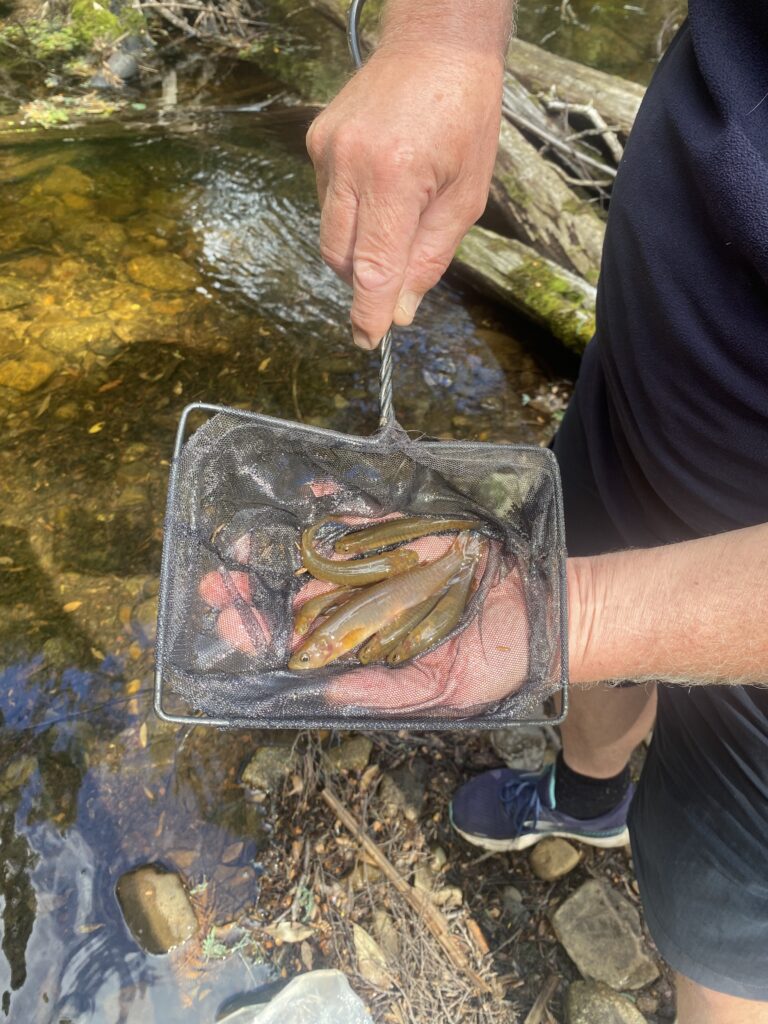Recovery Actions for Swan Galaxias
Swan galaxias are listed as endangered under the EPBC Act and the Threatened Species Protection Act 1995 and are one of the Australian Government’s priority species under its Threatened Species Strategy 2021-2031. Researchers have identified Swan Galaxias as one of Australia’s most threatened freshwater fish at imminent risk of extinction within the next 20 years.
Building on previous work, this project addressed the key threats to the species and built resilience in the population in anticipation of the impacts of climate change.
Our Approach
This project improved the conservation trajectory of the endangered Swan Galaxias by;
- Applying new techniques and technologies to habitat modelling to identify previously undiscovered populations and inform site selection for on-ground restoration works;
- Developing eDNA markers for population sampling as a tool in routine river health monitoring by partner organisations;
- Translocating Swan Galaxias to new sites to protect genetic diversity and safeguard population size, and;
Riparian restoration of creek beds at sites that hold critical populations to enhance bank stability, provide refugia and mitigate agricultural runoff.
PROJECT PILLARS SWAN GALAXIAS
Background
As well as being one of Australia’s most at-risk freshwater fish, the Swan Galaxias is also one of our most mysterious. Confined to remote locations in Tasmania’s northeast, Swan Galaxias were only discovered in 1978 and we still know very little about their historic range and evolutionary history.
Today, only a handful of fragmented and fragile populations remain. Under threat from habitat degradation, declining water quality and predation from invasive species including Brown Trout and Redfin Perch, the Swan Galaxias is endangered and facing extinction. In the sites where they can still be found, they typically remain in the shallow headwater of streams that are inaccessible to introduced fish species. While this gives them some protection from predators, it also makes them more susceptible to climate extremes; five separate populations have been wiped out by droughts and floods since the early 1990s.
eDNA markers
NRM South has worked with CSIRO and The University of Tasmania to develop sensitive assay for the detection of Swan galaxias DNA. This will allow us to detect Swan galaxias DNA that exists within the water column without having to physically observe or capture an individual.
This provides us with a non-invasive way of monitoring existing Swan galaxias populations and will hopefully aid in the detection of undiscovered populations.
Translocations
One way to help improve their chances of survival is to move a select number of fish from their current sites to new areas where they will be better protected from climate extremes and invasive predators,
NRM South worked with Tasmania’s Inland Fisheries Service and CSIRO to identify suitable new translocation sites anda total of 120 fish from four separate populations were moved to new locations as part of this project.
The source populations were carefully chosen, with guidance from geneticists from CSIRO and UTAS, to ensure a good genetic variation was maintained in the two new populations.
Riparian restoration
As well as establishing new populations this project has worked towards securing the future of the existing populations. This was through restoration works that has I improved the habitat of the Dairy Creek population. This population, discovered in the mid 2000’s, is genetically distinct from all known existing populations. Protecting this genetic diversity is therefore crucial to secure the survival of the species.
To do this we have undertaken riparian restoration along Dairy Creek. This will improve bank stability, provide shade and Refugia as well as minimising the impact of agricultural runoff.
Key Milestones
1 ha of habitat restored
2 new populations established
eDNA marker developed and field tested
120 Swan Galaxias translocated
What's Next
Inland Fisheries Service will continue to monitor the translocated Swan Galaxias to ensure these populations survive and flourish.


















